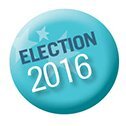Hillary Clinton and Donald Trump haven’t spent a lot of time sharing their thoughts about what should happen in public schools—but what do public school students think about Clinton, Trump, and the presidential campaign?
I got a chance to get at least a few answers to that question when I sat down with some students on the debate team at Green Valley High School in Henderson, just outside of Las Vegas, on Monday afternoon. They were slated to attend a debate watch party at the University of Nevada, Las Vegas.
Based on what they told me, it’s safe to say that despite the adeptness at social media assigned to their generation, these 15- and 16-year olds are largely unhappy with (if not repulsed by) how Facebook, Twitter, and other similar platforms have affected the 2016 race. But they also believe that the two campaigns are guilty, in turn, of cultivating simplistic and image-obsessed portraits of their candidates that thrive on social media.

“We’re taught: Don’t use Wikipedia,” said Benel Higuchi, a 15-year-old sophomore at Green Valley High. “Social media is the Wikipedia of everything.”
Benel went so far as to call the presidential election season “sickly.”
And Kozhakhmetova Zhibek, 16, a foreign exchange student from Kazakhstan, said she doesn’t really know what to make of what Trump has said, in particular because so much of what she’s seen on social media isn’t serious or particularly helpful, and is also hard to trust because it is ultimately impersonal: “There’s no face there.”
Less Involvement This Time
I also asked what questions they would put to Clinton and Trump during the debate. Aislinn Farmer, who’s also 15, said she’d be curious about the answers to the following:
- Does Trump truly believe in what he says he wants, or has he just been trying to attract votes?
- How much sexism and how many degrading comments has Clinton faced in her run for the presidency?
By the same token, with respect to Trump, “A lot of the people who voted for him ... don’t have a lot of background information,” Aislinn said.

Benel, on the other hand, said students at Green Valley definitely have a hard time connecting to Clinton, noting that they scoffed when her campaign put up a list on her website identifying seven ways she is like your “abuela” (Spanish for “grandmother”).
Maybe public schools don’t come up a lot when Clinton and Trump talk, but what do the students wish they would address?
The three students acknowledge that the federal government can’t impact a lot of what they see in their school, but they would want someone to solve the large class sizes. Their debate coach, Scott Ginger, says he thinks the average class size is 40 but can reach 45. Benel says students are often sitting on the floor, and moreover, can’t get the additional attention from overworked teachers they deserve.
“They aren’t given the best of conditions,” he said. (More than one student, it turned out, mentioned to me Nevada’s relatively low ranking among states when it comes to K-12. In fact, Nevada earned a D and ranked 51st, behind every

other state and the District of Columbia, according to the 2016 Education Week Quality Counts report.)
So how does the general sentiment among the students compare to past years at the school? Ginger, an English teacher with 26 years at Green Valley, said that in one respect, the unusual and hyper-partisan atmosphere has not translated into greater student excitement and interest in volunteering.
“I’ve had kids much more involved than they are this time,” Ginger said.
The third and final presidential debate, as it happens, will take place here at UNLV on Oct. 19. The format will be the same as this first debate. We’ll have more reactions to the debate from Benel and others at the UNLV watch party in the near future.
Photos: Democratic presidential nominee Hillary Clinton speaks with Republican presidential nominee Donald Trump during the presidential debate at Hofstra University in Hempstead, N.Y., on Sept. 26 (Patrick Semansky/Associated Press); Trump speaks at the same presidential debate (Semansky/AP).
